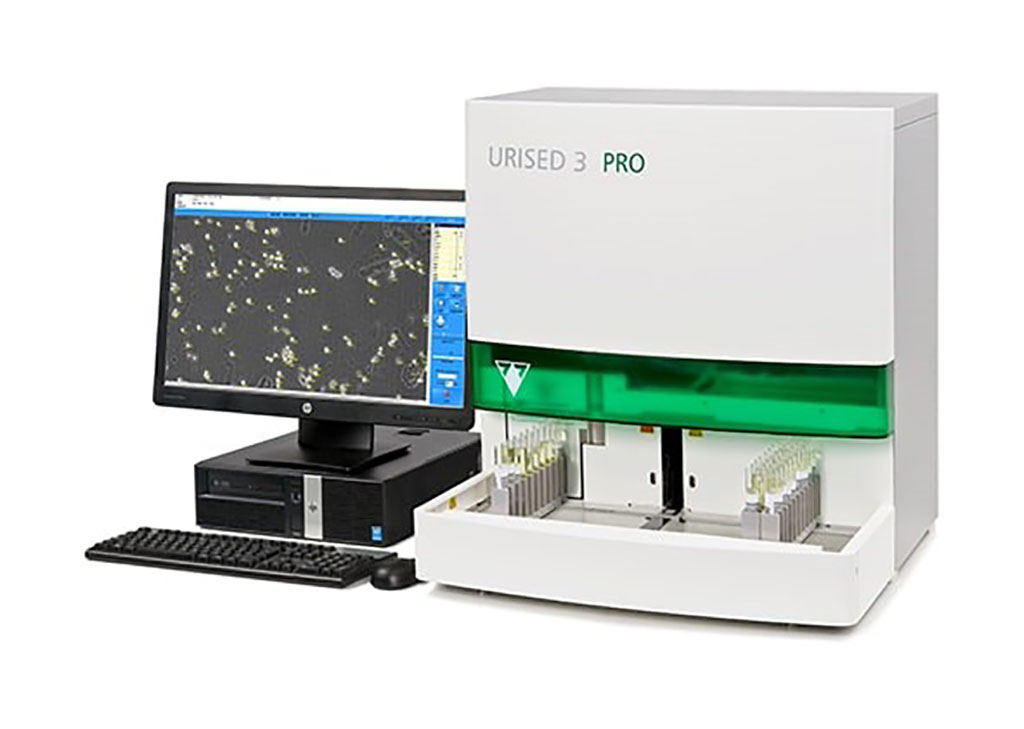Automated Urine Microscope Verified for Regional Laboratories
By LabMedica International staff writers
Posted on 03 Feb 2021
Automated Urine Microscopy examines a sample of urine under a microscope. It can check cells from the urinary tract, blood cells, crystals, bacteria, parasites, and cells from tumors. This test is often used to confirm the findings of other tests or add information to a diagnosis.Posted on 03 Feb 2021
Automation of urine particle counting has become a clinical standard in medium-sized and large laboratories by means of flow cytometry or several types of image analyzers. Reliable implementation of those instruments requires utilization of reference procedures in their verification.

Image: The UriSed 3 PRO is a professional automated urine sediment analyzer with a revolutionary new optical system combining bright-field and phase contrast microscopy (Photo courtesy of 77 Elektronika)
Clinical Chemists and Microbiologists from Helsinki University Hospital (Helsinki, Finland) carried out the primary verification with 463 urine specimens, and against urine culture on chromogenic agar plates with 396 parallel specimens. Nine secondary instruments were compared pairwise with the primary instrument. Both mid-stream collections (generally 90% of all specimens) and catheterized specimens were taken into the study, based on particle findings.
Specimens were chosen from routine analysis by UF-1000i instrument (Sysmex, Kobe, Japan) for verification of the primary (“Gold”) UriSed 3 PRO instrument (77 Elektronika, Budapest, Hungary) against reference visual microscopy during a 6-week period in September - October 2018. Comparisons to urine culture results were available for 396 parallel samples which were cultured by using automated inoculation with 1 µL loop (WASP automated microbiology instrument, COPAN Wasp, Brescia, Italy) on chromogenic agar plates (CHROMagar Orientation medium, CHROMagar, Paris, France) following incubation at 35 °C for 18 hours.
The scientists reported that relative imprecisions compared to Poisson distribution, R(CV), were estimated to be 1.0 for white blood cell (WBC) and 1.5 for red blood cell (RBC) counts, respectively. Spearman’s correlations against visual microscopy were rS = 0.94 for WBC, rS = 0.87 for RBC, and rS = 0.82 for squamous epithelial cell (SEC) counts. Agreement with visual microscopy (Cohen’s weighted kappa) was 0.94 for WBC, 0.89 for RBC, 0.88 for SEC, 0.59 for combined casts, and 0.49 for non-squamous epithelial cells (NEC). Bacteria were detected with a sensitivity of 90% and specificity of 39 against culture at 107 colony forming bacteria/L (CFB/L = 104 CFU/mL). Created flagging limits allowed automated reporting for 70-75 % of patient results.
The authors were able to install 10 UriSed 3 PRO instruments in a regional laboratory environment at HUSLAB, providing about 160,000 automated particle counts annually at 24/7 basis, thus satisfying both routine testing and emergency analysis of clinical samples. Analytical performance fulfilled the analytical performance specifications and expectations obtained from preliminary testing. The study was published on January 26, 2021 in the journal Clinica Chimica Acta.
Related Links:
Helsinki University Hospital
Sysmex
77 Elektronika
COPAN Wasp
CHROMagar














